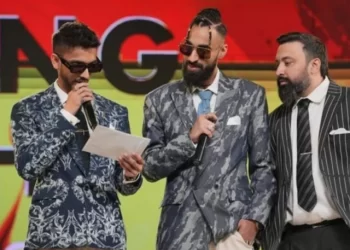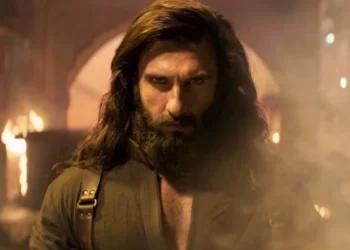SANTA FE, N.M. (news agencies) — Prosecutors sought to cast Alec Baldwin as someone who flouts rules and has little regard for safety at the first day of his New Mexico trial in the shooting of a cinematographer.
Special prosecutor Erlinda Ocampo Johnson repeatedly referred to Baldwin playing “make-believe” with a revolver on the set of the film “Rust,” and said it led to very real danger and the death of Halyna Hutchins, whom she called “a vibrant 42-year-old rising star.”
Ocampo Johnson told jurors in her opening statement Wednesday that Baldwin “requested to be assigned the biggest gun available” and that during a training session for it, he had “people filming him while he’s running around shooting this gun.”
The prosecutor said behind-the-scenes video will show Baldwin casually disregarding basic firearm safety.
“You will see him using this gun as a pointer to point at people, point at things,” Ocampo Johnson said. “You will see him cock the hammer when he is not supposed to cock the hammer, you will see him put his finger on the trigger when his finger’s not supposed to be on the trigger.”
Hutchins’ death and the wounding of director Joel Souza nearly three years ago sent shock waves through the film industry. The fatal shooting led to the felony involuntary manslaughter charge against Baldwin, the 66-year-old star of “30 Rock” and frequent host of “Saturday Night Live,” that could result in up to 18 months in prison.
His wife Hilaria Baldwin, younger brother Stephen Baldwin and older sister Elizabeth Keuchler sat behind him in the gallery again Thursday as the trial got off to a stumbling start on its second day.
Baldwin’s attorney Alex Spiro asked crime scene technician Marissa Poppell detailed questions about how she collected and handled the gun and the live rounds that somehow ended up on the set, but he was frequently interrupted by objections from the prosecution and subsequent sidebars with the judge.
The day’s testimony was expected to focus largely on the collection of evidence and the revolver Baldwin used.
Seated in two rows of eight each, jurors and alternate jurors scrawled notes as they listened to testimony. Jurors have their own close-up view of visual exhibits, with six monitors installed in the jury box.
Poppell’s questioning by the prosecution a day earlier allowed them to see in person the revolver and the spent round that killed Hutchins.
Spiro emphasized in his opening statement that Baldwin on the “Rust” set did what actors always do.
“He must be able to take that weapon and use it in the way that the person he’s playing would,” Spiro told jurors.
That includes pulling the trigger. Baldwin has said the gun fired accidentally, but Spiro said that it still would not be manslaughter even if he had willfully fired it.
“On a movie set, you’re allowed to pull that trigger,” Spiro said.
Spiro called the shooting an “unspeakable tragedy” and that an “amazing person” dies, but said the responsibility lies with the film’s armorer Hannah Gutierrez-Reed, who has already been convicted of involuntary manslaughter, and of assistant director David Halls, who told Baldwin the gun was “cold.”
“It had been checked and double checked by those responsible for ensuring the gun was safe,” Spiro said. “He did not tamper with it, he did not load it himself. He did not leave it unattended.”
The first witness to take the stand was Nicholas LeFleur, the first law enforcement officer to arrive at the movie set at Bonanza Creek Ranch after the shooting, and his lapel camera video gave jurors a glimpse of the chaotic scene: a grim view of an apparently unconscious Hutchins as LeFleur and others worked to revive her.
Later in the video, LeFleur can be seen telling Baldwin not to speak to the other potential witnesses, but Baldwin repeatedly does.
“Was Mr. Baldwin supposed to be talking about the incident?” special prosecutor Kari Morrissey asked him.








